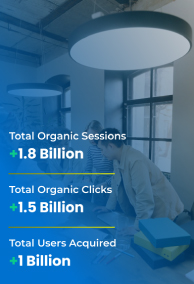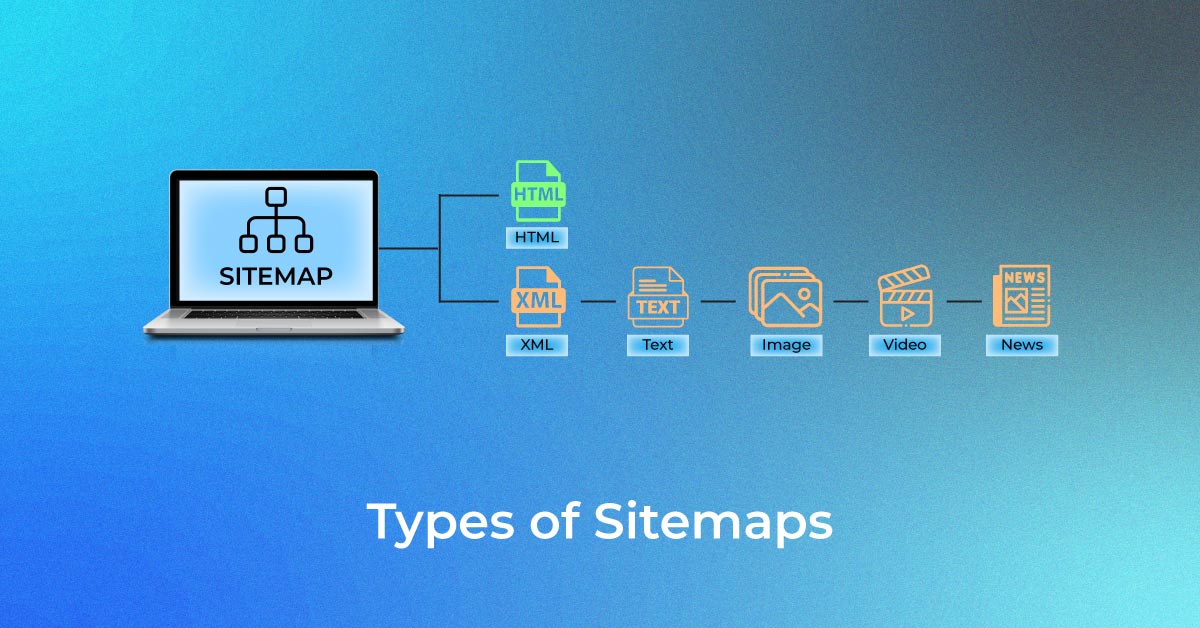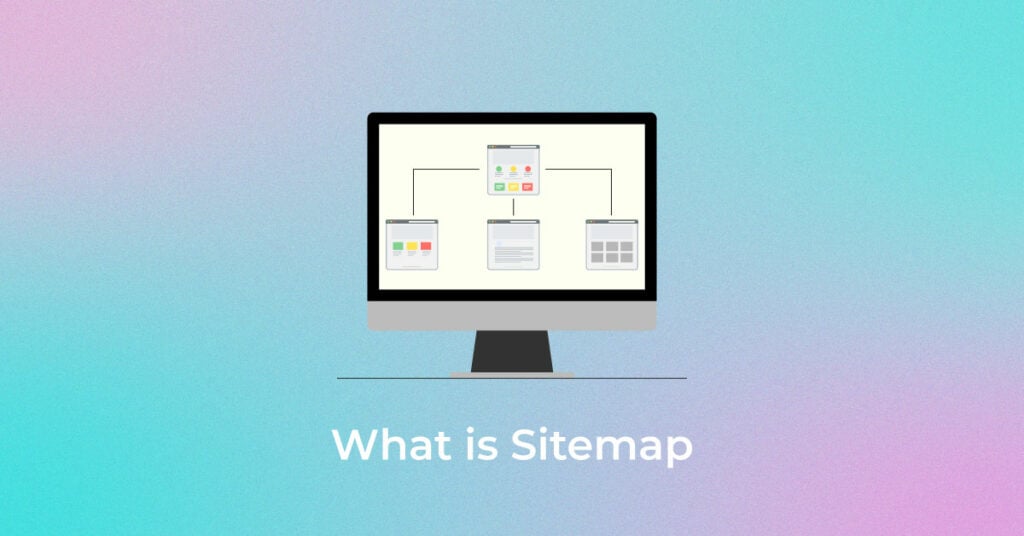
Witness an Increase in your ROI
Unlock higher rankings, quality traffic, and amplified conversions through tailored award-winning SEO strategies.
A sitemap is basically a detailed blueprint of what exactly your website would look like. Sitemaps serve the purpose of informing the search engines to crawl, index, and discover content on your website.
Sitemaps provide valuable information about the pages and content on your website to search engines. They help search engines in understanding the blueprint of your website and the information presented in your website.
XML sitemaps are the most used type of sitemaps. So, what exactly do they entail? Let us find out.
What is an XML Sitemap?
A “Sitemap” or “XML Sitemap” is a file that contains a list of all the important pages of a website. The reason for having all of them stored in one file “XML Sitemap” is that it helps crawlers to find all the pages in one place, instead of discovering them via internal links.
What does a sitemap look like?
This is how a sitemap looks like. It contains various tags in it:
<?xml version=”1.0″ encoding=”UTF-8″?>
<urlset xmlns=”http://www.sitemaps.org/schemas/sitemap/0.9″>
<url>
<loc>http://www.example.com/</loc>
<lastmod>2020-04-01</lastmod>
<changefreq>daily</changefreq>
<priority>0.8</priority>
</url>
</urlset>
- <urlset> – This is the current protocol standard, and the Sitemap opens and closes with this tag.
- <url> – This tag is known as the parent tag of each URL’s entry.
- <Loc> – Here goes the URL of your page.
- <lastmod> – This tag contains the information of “what was the last modified date of the file.”
- <changefreq> – This tag contains information about how frequent the file would change. It could be the content within a site or even the slightest modification. It can be set to hourly, daily, weekly, monthly, yearly, always & never.
- <priority> – This tag represents the importance of the URL. The value can range anywhere from 0.0 to 1.0.
Check out this video to know more about sitemap

Why is Sitemap important?
A Sitemap has a significant role to play in SEO. Google bots/crawlers or any other search engines bot, for that matter, discover pages through internal linking. There are high chances that your important pages can be left out during the crawling process if the internal linking is improper.
No businesses or individuals would want their essential pages to be left unindexed. To avoid such risks, it is always recommended to have an XML Sitemap, since it contains all the URLs of a website to crawl.
Pages That Should be Present in the XML Sitemap
One of the main uses of XML sitemaps is informing search engines about the most important URLs on your website. Knowing which pages on your website don’t hold much value and you do not want to show up on search results is also part of the course.
Here are the pages that should be present on a priority in an XML sitemap of your website.
- Category Pages
- Main Menu Pages
- Subcategories
- Blog Pages
- Internal Pages
- Contact Pages
- Pages with information about the brand
Best Practices of XML Sitemap
1. Create a Sitemap
If your website is built using WordPress, you can use plugins like Yoast SEO or Google XML Sitemaps to make your sitemaps automatically. These tools will make and update your sitemaps as you keep adding new pages to your site.
If you do not use WordPress, there are many third-party tools which can help you in generating XML sitemaps. XML-Sitemaps.com is a good example. These tools can help you in generating sitemaps of your website which you can submit to Google.
2. Check your Sitemap
Once the tools have generated your XML sitemap, check the file to ensure that all the pages are present in it. Before submitting your page, it is imperative to ensure that no pages you want to be indexed by search engines are missing from the file. If everything looks good, move on to the next step
3. Submit Sitemap to Google Search Console
The final step is to submit your sitemap to GSC. All you need to do is login to your GSC account. Once logged in, go to the “Index” section and click on “Sitemaps”.
To submit your sitemap, login to your Google Search Console account. On this page, you will be able to see the list of all the previously submitted sitemaps for your website. Click on “Add a Sitemap” and add the URL of your sitemap. Click on submit after taking a final look at the sitemap, and that’s it!
What are the types of Sitemap?
XML Sitemap are of 4 types. They are
1. Image Sitemaps
Image sitemaps are specifically created to add information to images about their content. Using this type of sitemap can help you in adding details to your image content, such as geo location, keywords, etc. Submitting this to Google can help your images in ranking on Google Image Search.
2. Video Sitemaps
Video sitemaps help websites in enhancing the contents of your video with additional information provided to the search engines to understand them better. This can include defining the category of the videos, adding scripts of audio in the videos, and much more. Using video sitemaps can help you rank well on the Google Video Search.
3. News Sitemaps
News sitemaps help your news content be discovered by Google much faster. News content your website uploads which are optimized for Google News can get a boost in rankings with these sitemaps. News sitemaps can have additional information on news content for Google News such as domain, publication date, event, and much more.
4. Mobile Sitemaps
Mobile sitemaps, as the name suggests, are specifically for helping search engines discover mobile-friendly pages on your website. They can be separately submitted to GSC by websites to enable search engines in knowing which pages on your website offer mobile web content. This is done primarily for mobile SEO, and helps pages rank higher on SERPs in mobile devices.
What are the benefits of having a sitemap for a website?
Having a sitemap for your website could prove more benefits than otherwise.
- Once you list all the URLs of your website in the sitemap, this helps search engines crawler to discover and crawl all the pages efficiently.
- Within a sitemap, you can set priority to URLs. Once you set this priority, search engine bots will focus more on these URLs over others.
- You can change information like “last mod” or “change frequency” of a URL. So, what is “Last Mod”? As the terms speak, “Last Mod” means when was the page was modified last time. While “change frequency” as it says, indicates how often would a page change. “Last Mod” or “change frequency” are essential. When you update “last mod” or “change frequency” details, the crawlers notice this and begin to crawl again to index any content that was updated.
XML Sitemaps are crucial for search engine bots as they provide all the important pages at one place with priority set for every page. This is why having an XML Sitemap for any size of the business has become essential. You can create a sitemap using multiple tools.
To know more about the same you can read the article, “How to Create a Sitemap and submit to Google.”
FAQ
What is a sitemap?
A sitemap is a file or webpage that provides a structured, organized list of all the pages and content on a website. It helps search engines understand the site’s structure and index its pages more effectively.
Why are sitemaps important for websites?
How is a sitemap different from the navigation menu on a website?
What is the difference between an XML sitemap and an HTML sitemap?
An XML sitemap is created primarily for search engines and contains information about URLs, while an HTML sitemap is designed for users and provides a clickable list of pages on a website.
Can a sitemap improve SEO and search engine rankings?
Yes, a well-structured sitemap can improve SEO by helping search engines crawl and index your content more efficiently. It can lead to better visibility and potentially higher rankings in search results.
Popular Searches
List of Search Engines | Top Google Searches | Importance of Digital Marketing | Importance of Website | Youtube SEO Tools | Types of SEO |Website Structure | Benefits of SEO | Cloaking |Google Sandbox | SEO Friendly Website | Blog Commenting for SEO | Server Side Rendering Vs. Client Side Rendering | Youtube Trends | Types of Sitemaps | Social Bookmarking |Off Page SEO Checklist | HTTP Status Codes | Vanity URL | SEO Vs. PPC | Best SEO Blogs | Benefits of LinkedIn Ads | Keyword Density | How to Use Keywords in Blog Posts | Website Migration | Digital Marketing Types | Search Engine Optimization | Canonical Tags | On Page SEO | What is Off Page SEO | Link Building for SEO | Image Optimization | SEO Company in Boston | Dallas SEO | SEO Company Houston
How useful was this post?
5 / 5. 1






